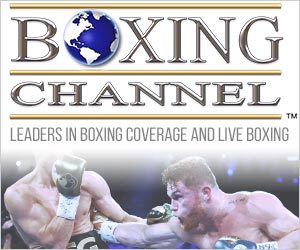Featured Articles
Burning Questions (And Speculative Answers) For 2012…RASKIN
 In a sport with as many moving pieces, individual interests, and BS agendas as there are in boxing, nothing is ever entirely predictable. But as 2012 dawns, the year ahead feels even more unpredictable than usual. The HBO boxing department has a new leader, and he used to be the head of the Showtime boxing department. Consequently, the Showtime boxing department has a new leader, and he used to be an employee of Golden Boy Promotions. Over at ESPN, both the main man in front of the camera and the main man behind the scenes have stepped down. And switching from the guys in suits to the guys in trunks, my pound-for-pound number one, Floyd Mayweather, takes up residence at the Clark County Detention Center this Friday, my pound-for-pound number two, Manny Pacquiao, might just be in decline, and my pound-for-pound number three, Sergio Martinez, basically told HBO to suck it last week.
In a sport with as many moving pieces, individual interests, and BS agendas as there are in boxing, nothing is ever entirely predictable. But as 2012 dawns, the year ahead feels even more unpredictable than usual. The HBO boxing department has a new leader, and he used to be the head of the Showtime boxing department. Consequently, the Showtime boxing department has a new leader, and he used to be an employee of Golden Boy Promotions. Over at ESPN, both the main man in front of the camera and the main man behind the scenes have stepped down. And switching from the guys in suits to the guys in trunks, my pound-for-pound number one, Floyd Mayweather, takes up residence at the Clark County Detention Center this Friday, my pound-for-pound number two, Manny Pacquiao, might just be in decline, and my pound-for-pound number three, Sergio Martinez, basically told HBO to suck it last week.
2012 is probably going to be a lot different than 2011 and 2010. (Except for one thing: 2010 was “the year Mayweather and Pacquiao didn’t fight each other,” 2011 was also “the year Mayweather and Pacquiao didn’t fight each other,” and 2012 just might be shaping up as “the year Mayweather and Pacquiao didn’t fight each other.”)
With this much uncertainty surrounding the sport of boxing as the calendar turns over, it’s a perfect time to ask and answer all of the burning questions on fight fans’ minds regarding the 12 months to come. We’ll start with the question we just can’t seem to get away from, and move on from there:
Will Mayweather and Pacquiao fight each other?
Not in the first half of the year. But could it happen on one of those traditional pay-per-view blockbuster dates in September or November? It’s highly possible that Floyd—seeing a slipping Pacquiao and hearing a ticking clock—will want it, highly possible that Bob Arum will recognize that the end of the Pacquiao era is nigh and begrudgingly pursue it, and a near-certainty that the fearless and fan-friendly Pacquiao will want it. I think the biggest X-factor is what happens with Pacquiao’s fight in the spring. My guess is that he’ll fight Juan Manuel Marquez for a fourth time. (I’m not buying the idea of less marketable fights against Tim Bradley or Lamont Peterson, and I think Miguel Cotto is too smart to want a rematch with Pac.) And as we all know now, any fight against Marquez is a fight Pac-Man can lose. If he does lose, Pacquiao-Mayweather becomes pointless. If he wins—especially if he does so without controversy—Pacquiao-Mayweather is red hot again. The final guess here: Pacquiao fights Marquez, defeats him narrowly, and all parties are ready to cash in with Pacquiao-Mayweather in the fall, to the tune of 2.8 million PPV buys.
Will anything happen at heavyweight to make anyone in America care?
Only two things can move the needle at this point: a Klitschko losing or a serious new American contender emerging. The former ain’t happening (although I wouldn’t mind seeing a healthy Odlanier Solis get a rematch against Vitali; he has the skill to be less than a 10-1 underdog, which probably isn’t true of any other potential challenger). So we need an American up-and-comer to get excited about, and Seth Mitchell, who performed as impressively as anyone could have hoped in his HBO debut in December, is the only guy with an outside chance. Unfortunately, I see the media’s need to find the next great heavyweight and the fact that the pressure can’t be spread among numerous hopefuls as a formula for Mitchell to disappoint. He’ll struggle to an underwhelming decision win against a veteran contender to start the year, then he’ll take heat for dialing back the competition to someone sub-Timor-Ibragimov the next time out. He’ll escape 2012 still unbeaten and a legit top-10 contender (in a division that goes only two deep, it should be noted), but the buzz on December 31 won’t be what it was on January 1.
What impact will Ken Hershman and Stephen Espinoza have?
From the looks of things, Hershman’s job at HBO is going to be even more challenging than he probably expected, with Golden Boy having a built-in relationship with the new Showtime boss, with Victor Ortiz-Andre Berto II already jumping networks, with Sergio Martinez announcing that his next fight won’t be on HBO, and with Mayweather out of the mix for the first half of the year. It sure looks like the stage is set for Showtime to challenge HBO’s supremacy, even if they remain at a budgetary disadvantage. Then again, Hershman didn’t earn the HBO job by being an ambition-less dummy. Sort of like how the peak of the WWF-WCW war from around 1996-’99 saw both companies pushing each other to reach new levels of entertainment, I suspect the HBO/Showtime shakeups will work out to the great benefit of boxing fans once the slow first month of 2012 has passed. (And I feel at least 63 percent confident in predicting that we won’t see Gary Russell Jr. in a four-rounder on either network at any time in 2012.)
Will we get Andre Ward vs. Lucian Bute?
Ward has already earned the right to call himself The Man at 168 pounds, but if he wants to be The Undisputed Man, he does still need to take care of business against Bute. And I suspect he intends to. Ward’s apparent disinterest in the Romanian-Canadian immediately following his Super Six finals victory over Carl Froch struck me as a negotiating ploy. Ward knows the fight belongs north of the border and if he’s going to concede home-ring advantage, he wants to at least hardball his way to the larger purse. Plus, Ward’s last five fights have come against Mikkel Kessler, Allan Green, Sakio Bika, Arthur Abraham, and Froch, lasting an average of 11.8 rounds; he’s entitled to a tuneup. So in the spring expect Bute vs. Froch and Ward vs. someone he can knock out, and then in the fall expect Ward vs. Bute if Froch doesn’t upset that plan.
Who will be the new Friday Night Fights studio host?
I assume we’ll get this answer any day now, since, you know, there’s an FNF broadcast scheduled for this Friday. But in the meantime, my quick prediction: Bernardo Osuna. He’s a part of the ESPN family already, he’s polished in front of the camera, he knows boxing, and he’s bilingual, which is handy when it comes to interviewing certain guests or even translating from a distance for Joe and Teddy. I have no inside information on this, other than me talking to Osuna in Las Vegas in November and him saying he didn’t know anything yet, but if you find out in a day or two that he got the gig, you heard it here first.
Whose opposition will piss fans off more, Julio Cesar Chavez Jr. or Saul Alvarez?
Before I answer the question, allow me to follow my Ring Theory co-host Bill Dettloff’s lead and note that I will henceforth cease to refer to JCC Jr. as a “Chavez” because he’s unworthy of that surname, and instead refer to him as Julio Cesar Salad. Honestly, Salad and Canelo are being moved with near-equal calculated carefulness, but Salad is 4½ years older, so Canelo gets more of a pass if he spends another year fighting safe opposition. That said, Marco Antonio Rubio is a credible challenge for Salad, assuming Top Rank doesn’t drug Rubio in the dressing room. So if Alvarez fights a total patsy in April, he might exceed Salad in terms of his heat index. This is a tough call, but I’ll go with Chavez as the greater whipping boy of the fans by year’s end. The only thing I know for sure is this: Salad will not fight Sergio Martinez in 2012 and Alvarez will not fight Miguel Cotto in 2012, and yet both fringe contenders will insist on calling themselves “champions.”
Which American former middleweight champion will have a greater impact in the boxing ring, Jermain Taylor or Kelly Pavlik?
This is a modified version of a question I asked Dettloff last week on Ring Theory, and I’m asking it again because it’s fascinating that Taylor might be in a position to make a little noise again while his two-time conqueror, Pavlik, appears to have unraveled so severely in his personal life that his career might never resume. But I’m going to go against the grain and select Pavlik as the answer to this question. If Pavlik fights in 2012—a major “if,” I realize—the tabloid-ish attention surrounding his first fight will guarantee that his impact exceeds Taylor’s. I think as long as Cameron Dunkin and company can haul Pavlik the hell outta Youngstown and get him into Robert Garcia’s gym in southern California, there’s a good chance “The Ghost” will be in line for 2012’s Comeback of the Year.
What are the three most horrifying things Jose Sulaiman will say this year?
1. “The WBC proudly supports Jerry Sandusky.”
2. “Did you see the way that bee-otch was dressed? She was asking for it!”
3. “I am pleased to announce I have been re-elected president of the WBC by a unanimous vote of the board of directors.”
Eric Raskin can be contacted at RaskinBoxing@yahoo.com. You can follow him on Twitter @EricRaskin and listen to new episodes of his podcast, Ring Theory, at http://ringtheory.podbean.com.
-

 Featured Articles4 weeks ago
Featured Articles4 weeks agoAvila Perspective, Chap. 330: Matchroom in New York plus the Latest on Canelo-Crawford
-
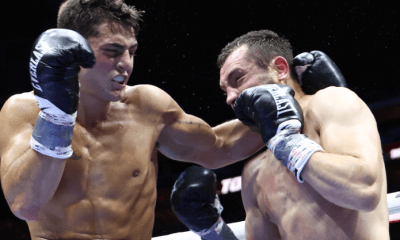
 Featured Articles3 weeks ago
Featured Articles3 weeks agoVito Mielnicki Jr Whitewashes Kamil Gardzielik Before the Home Folks in Newark
-
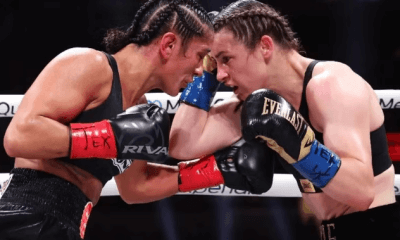
 Featured Articles7 hours ago
Featured Articles7 hours agoResults and Recaps from New York Where Taylor Edged Serrano Once Again
-
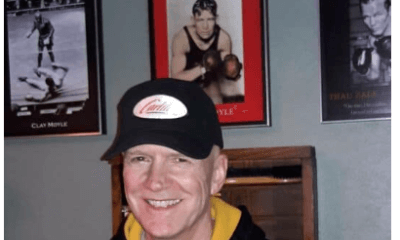
 Featured Articles4 weeks ago
Featured Articles4 weeks agoCatching Up with Clay Moyle Who Talks About His Massive Collection of Boxing Books
-

 Featured Articles5 days ago
Featured Articles5 days agoFrom a Sympathetic Figure to a Pariah: The Travails of Julio Cesar Chavez Jr
-
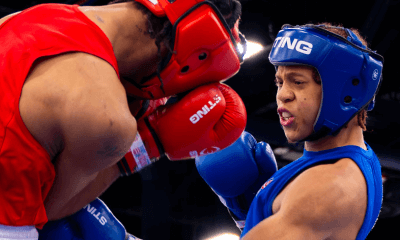
 Featured Articles3 weeks ago
Featured Articles3 weeks agoMore Medals for Hawaii’s Patricio Family at the USA Boxing Summer Festival
-
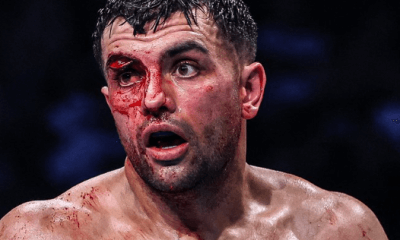
 Featured Articles7 days ago
Featured Articles7 days agoCatterall vs Eubank Ends Prematurely; Catterall Wins a Technical Decision
-
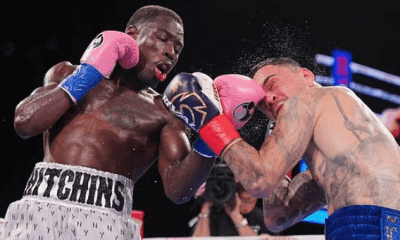
 Featured Articles4 weeks ago
Featured Articles4 weeks agoRichardson Hitchins Batters and Stops George Kambosos at Madison Square Garden

















